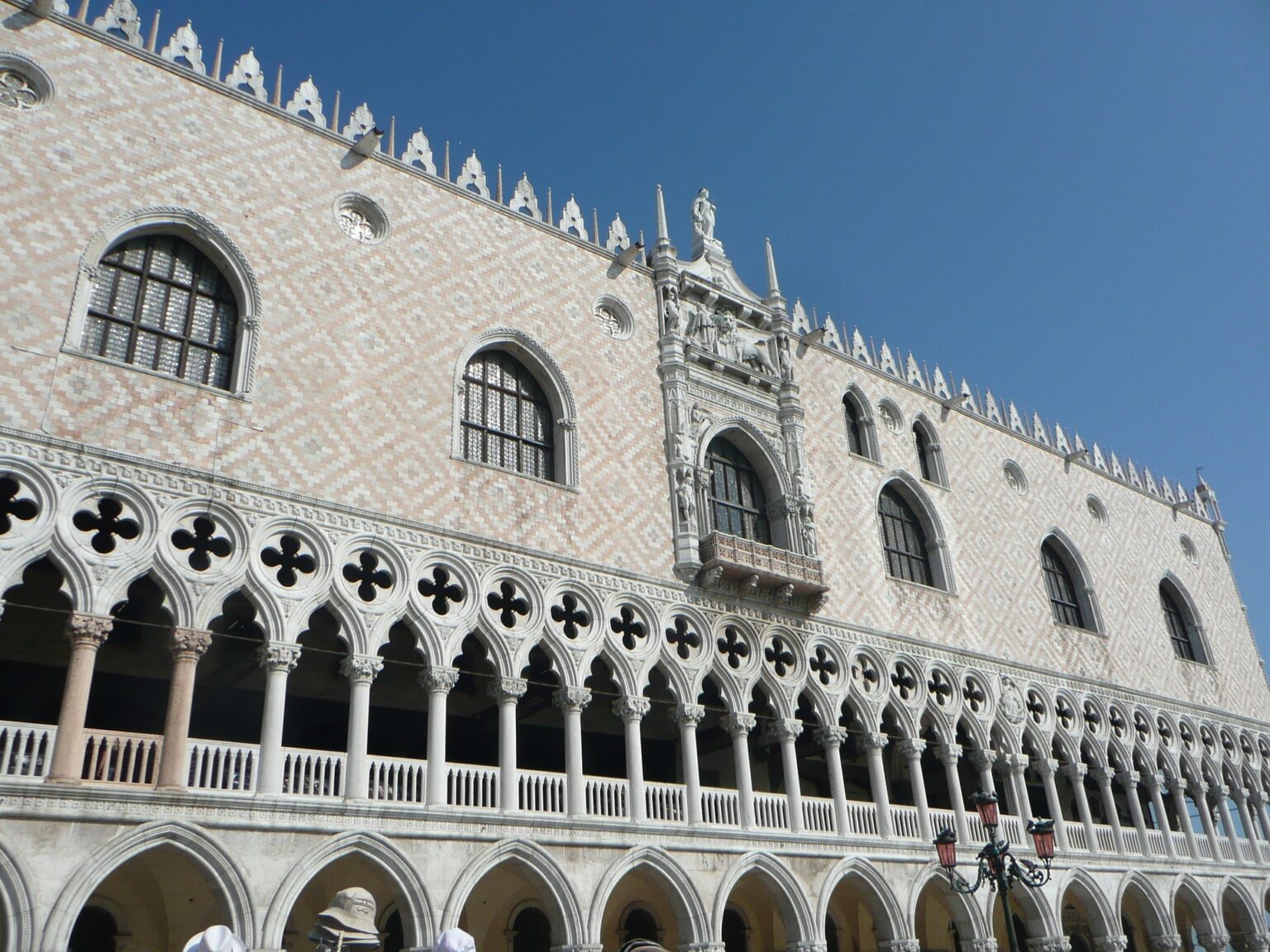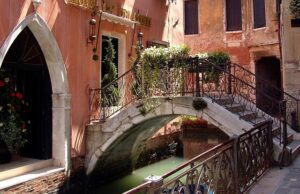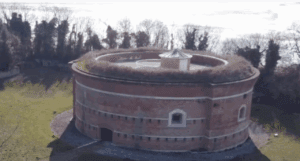The Doge’s Palace of Venice — Secrets, Scandals & Splendor of a Floating Empire
Standing proudly beside St. Mark’s Basilica, shimmering in pink Verona marble and white Istrian stone, the Doge’s Palace — or Palazzo Ducale — is more than just a building. It is the beating heart of old Venice: a symbol of power, justice, and the unique spirit that once made the Venetian Republic the envy of Europe.
Step inside its gilded halls, cross the Bridge of Sighs, and you’ll feel the echo of centuries — where politics, art, and intrigue intertwined to shape the destiny of the “Queen of the Adriatic.”
📜 A Palace Born from the Sea — The Origins of Power
The story of the Doge’s Palace begins more than a thousand years ago. The first wooden structure on this site dates back to the 9th century, when the early Doges (Venetian rulers) governed a fledgling maritime city rising from a cluster of muddy islands.
In 976, a devastating fire destroyed much of the original complex — but like Venice itself, the palace was reborn. Between the 14th and 15th centuries, the Venetians rebuilt the palace in dazzling Gothic style, fusing Byzantine, Islamic, and Renaissance influences into one harmonious masterpiece. The result was a building that seemed to float — a palace both delicate and indestructible, just like the Republic it represented.
What made it truly revolutionary was its design: instead of heavy defensive walls, it featured open loggias, airy arches, and a luminous façade that welcomed light and reflected authority through beauty. Venice, after all, preferred diplomacy and trade to brute force — and its architecture reflected that philosophy perfectly.
🏛️ Venetian Gothic Perfection — Architecture & Symbolism
At first glance, the Doge’s Palace looks like lace carved in stone. Its lower loggia — a forest of slender columns — supports a massive façade of pink and white marble in a diamond pattern. It’s both graceful and imposing, and every detail carries meaning.
The palace faces the lagoon on one side and the Piazza San Marco on the other, symbolizing the dual power of Venice — the city’s worldly government and its eternal connection to the sea. Statues of Justice, the Archangel Michael, and the Judgment of Solomon adorn the upper corners, reminding both citizens and visitors that Venice’s power was balanced by fairness (or at least, the illusion of it).
Inside, the palace is organized around a vast Cortile — the central courtyard. Here, two grand staircases dominate the scene: the Scala dei Giganti (Staircase of the Giants), flanked by colossal statues of Mars and Neptune, symbolizing Venice’s control over land and sea. It was on these steps that each newly elected Doge swore his oath of office before the people.
👑 Who Was the Doge of Venice?
The Doge — from the Latin dux, meaning “leader” — was the highest official of the Republic of Venice. Unlike kings, Doges were not hereditary rulers but elected by a complex, almost theatrical system designed to prevent corruption.
The election took place inside the palace’s Great Council Chamber, with a mix of random draws and votes involving hundreds of nobles. It was part democracy, part political theater — ensuring that no single family could dominate the state.
Once elected, the Doge lived in the palace, surrounded by splendor but bound by strict laws. He couldn’t even open letters from foreign ambassadors without witnesses. His life was both majestic and claustrophobic — a golden cage of duty, symbolism, and ceremony.
Over the centuries, 120 Doges ruled Venice, from the city’s founding in 726 until the fall of the Republic in 1797, when Ludovico Manin surrendered to Napoleon. Today, his portrait hangs in the Great Council Chamber — his face pale and weary, as if he knew he was watching a thousand years of independence dissolve into history.
🕊️ The Hall of the Great Council — Where Venice Ruled the World
The beating heart of the Doge’s Palace was the Hall of the Great Council (Sala del Maggior Consiglio), one of the largest rooms in all of Europe. Measuring 54 meters long and 25 meters wide, it could hold over 2,500 noblemen — the ruling elite of Venice.
This was where the most important decisions were made: declarations of war, trade negotiations, and the election of the Doge. Imagine the room filled with the rustle of silk robes and the glow of golden frescoes, as the fate of empires was debated beneath ceilings painted by masters like Tintoretto and Veronese.
At one end of the hall, Tintoretto’s colossal painting, Paradise, dominates the wall — the largest oil painting in the world. Its swirling mass of angels and saints seems to float above the room, reminding those below of divine order — and perhaps of divine judgment.
Visitors can see it today on our Doge’s Palace & St. Mark’s Basilica Skip-the-Line Private Tour, where your guide will reveal hidden meanings behind each fresco and architectural detail.
🌉 The Bridge of Sighs — From Power to Prison
Just behind the grandeur of the Doge’s Palace lies its darker twin: the prison. To reach it, prisoners crossed the narrow, enclosed Bridge of Sighs — a name given by the 19th-century poet Lord Byron, who imagined convicts sighing as they caught their last glimpse of Venice through the tiny stone windows.
Built in 1600, the bridge connects the palace to the Prigioni Nuove (New Prisons) across the canal. Despite its romantic reputation, this was no place for love — only for despair. Damp, airless, and infested with rats, the cells were a far cry from the glittering halls just a few steps away.
Walking across the bridge today, you can almost feel the chill of history — the separation between liberty and captivity, beauty and fear. Yet it remains one of the most photographed spots in Venice, a paradox that perfectly captures the city’s dual nature.
⚖️ The Prisons of the Doge’s Palace — The Piombi and the Pozzi
The palace held two distinct prison areas: the Piombi (“Leads”) and the Pozzi (“Wells”). The Piombi, located beneath the lead-covered roof, housed political prisoners and state offenders. It was unbearably hot in summer and freezing in winter — a cruel irony for a place so close to the Doge’s luxurious quarters.
The Pozzi, deep below ground level, were even worse. These damp, pitch-dark cells lay just above the canal waters, where the stench and humidity made survival itself an ordeal. Prisoners were often chained to the walls, their only companions the dripping echo of water and the knowledge that they’d been forgotten.
Torture was part of the justice system — not for punishment, but for “confession.” Instruments like the strappado (where victims were hoisted by their arms behind their backs) were used in interrogation rooms adjacent to the Senate chambers. Justice in Venice was swift, secret, and often symbolic.
🗝️ Casanova’s Great Escape — Venice’s Most Daring Legend
Of all the stories to come out of the Doge’s Palace, none is more famous — or more cinematic — than the escape of Giacomo Casanova. The infamous adventurer, writer, and lover was imprisoned here in 1755 on charges of blasphemy and “corrupting morals.”
His cell, under the lead roof of the Piombi, was suffocating in summer and icy in winter. But Casanova was nothing if not resourceful. With the help of a fellow inmate, the monk Father Balbi, he fashioned an escape plan worthy of a novel.
Using smuggled tools, the two cut through the ceiling of their cell, crawled through the rafters, broke into a corridor above the Inquisitors’ offices, and — after hours of sneaking through locked rooms — finally emerged through a window onto the roof. From there, they climbed down through the palace and simply walked out through the main door at dawn, blending in with early visitors.
Casanova later recounted the adventure in his autobiography, Histoire de ma Vie, turning his escape into one of the most enduring legends of Venice. To this day, guides point out his cell to curious visitors who dream of that same daring freedom.
💡 You can retrace his steps (without the danger) on our Doge’s Palace Skip-the-Line Tour, which includes access to the Secret Itineraries — the hidden rooms and passages where Casanova made his escape.
🎨 A Museum of Power — Art, Symbolism & Venetian Pride
The Doge’s Palace isn’t just a political monument — it’s also an artistic treasure chest. Every hall, staircase, and ceiling is adorned with paintings that glorify Venice as a divine power blessed by heaven.
The city’s greatest painters — Titian, Veronese, Tintoretto, Bellini — all left their mark here. Veronese’s Rape of Europa dazzles with color and sensuality; Tintoretto’s Justice and Peace merges allegory with political propaganda. Even the ceilings serve as lessons in Venetian identity, celebrating trade, exploration, and divine favor.
Yet beneath all the beauty lies a message: the Republic endures because its citizens serve the common good. Art here wasn’t mere decoration — it was ideology carved in gold.
🏺 Visiting the Doge’s Palace Today
Today, the Doge’s Palace is a museum — one of the most visited sites in Venice, welcoming over a million guests each year. It remains part of the Civic Museums of Venice network, alongside St. Mark’s Basilica and the Correr Museum.
Visitors can walk through the Golden Staircase (Scala d’Oro), admire the Hall of the Senate and the Chamber of the Council of Ten, and cross the Bridge of Sighs into the gloomy cells beyond. Every step offers a contrast between splendor and suffering — a reminder that Venice’s power always came at a price.
For skip-the-line entry, we recommend booking your Doge’s Palace Fast-Track Tickets or joining our expert-led private tour for an immersive experience that brings the palace’s stories to life.
💡 Insider Tips for Visiting
- Arrive early — the palace opens around 9:00 a.m., and the first hour is the quietest.
- Book in advance — lines at the ticket office can stretch across St. Mark’s Square, especially in summer.
- Wear comfortable shoes — the tour includes stairs, bridges, and uneven floors.
- Don’t miss the Secret Itineraries Tour — it includes the Inquisition chambers, archives, and Casanova’s cell.
- Combine it with St. Mark’s Basilica — the two buildings were meant to be experienced together.
🎟️ For maximum convenience, you can also get combined skip-the-line Doge’s Palace and Basilica tickets or join our Off-the-Beaten-Path Orientation Tour to discover the quieter corners around St. Mark’s.
🕰️ The Fall of the Republic — End of an Era
In 1797, after more than a millennium of independence, the Venetian Republic fell to Napoleon Bonaparte. The last Doge, Ludovico Manin, surrendered the city without resistance. According to legend, as he stepped down, the great bells of St. Mark’s rang out one final time for the “Serenissima” — the Most Serene Republic.
The palace, once a center of global power, became first a French, then Austrian administrative building, before being restored as a museum in the 20th century. Yet even stripped of its political role, it still radiates majesty — a ghost of empire that refuses to fade.
✨ Final Thoughts — Venice’s Soul in Stone
The Doge’s Palace isn’t just an architectural marvel or a museum; it’s a mirror of Venice itself. Every column, painting, and prison cell tells a story — of ambition and justice, art and tyranny, brilliance and decay. Standing in its courtyard, with the sound of water lapping nearby, you can almost hear the whispers of history carried on the lagoon breeze.
Visiting the Palazzo Ducale means stepping into the heart of the Venetian Republic — a world where politics was art, art was propaganda, and beauty was power.
💫 Want to walk in the footsteps of the Doges? Book your private Doge’s Palace & Basilica tour with Tour Leader Venice and uncover the legends, symbols, and secrets that make this palace one of the most extraordinary places on Earth.
FAQs About the Doge’s Palace in Venice
Is it worth visiting the Doge’s Palace in Venice?
Absolutely — the Doge’s Palace (Palazzo Ducale) is one of Venice’s most iconic and historically rich landmarks. You’ll walk through grand halls painted by Tintoretto, Veronese, and Titian, cross the Bridge of Sighs, and step into the very rooms where the Republic of Venice once ruled the seas. For the best experience, join our Doge’s Palace & St. Mark’s Basilica Skip-the-Line Private Tour.
What’s inside the Doge’s Palace?
Inside, you’ll explore the Golden Staircase (Scala d’Oro), the Hall of the Great Council, and the Chambers of the Council of Ten, along with access to the Prisons and the legendary Bridge of Sighs. For a deeper look, try the Secret Itineraries Tour, included in our Doge’s Palace Skip-the-Line Private Experience, which reveals Casanova’s escape route and hidden archives.
Can I buy skip-the-line tickets for the Doge’s Palace?
Yes — you can book Doge’s Palace Fast Track Tickets in advance to avoid queues. For an even smoother visit, combine your ticket with St. Mark’s Basilica entry or book a Private 1-Hour Boat Tour — Grand Canal & Hidden Canals to see the palace’s façade and Bridge of Sighs from the water.






